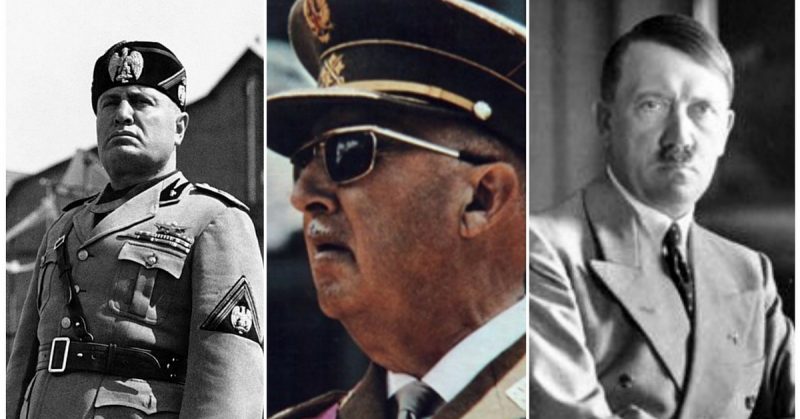Most histories of the Second World War tell the same story of the clash between the Allied and the Axis powers. German and Italian forces blitzkrieged their way past the Allied defenses in France and northern Africa, their momentum was only checked by the formidable airpower of the British over the English Channel.
Then the Axis lost patience and brought new players into the war: Hitler invaded the Soviet Union, ending the German-Russian non-aggression pact, and Japan struck a preemptive blow against the United States’ naval base at Pearl Harbor.
As we all know, the Allied forces were able to dismantle the early gains made by the Axis powers and eventually win the long, bloody war. The horror of the Holocaust was discovered, nuclear weapons were used, and the Cold War began—that is how most descriptions of World War II end.
However, an important piece is missing from that story. What of Generalissimo Francisco Franco, the only major fascist dictator to survive WWII? Franco had conspired with Mussolini and Hitler before the Second World War and had kept up a correspondence with his fellow fascists during the war.
The Franco Regime worked with German intelligence and gladly supplied the Axis with war materials, most notably wolfram/tungsten (used in hardening steel).
Here are ten little-known facts about how Francisco Franco aided the Axis powers during WWII.
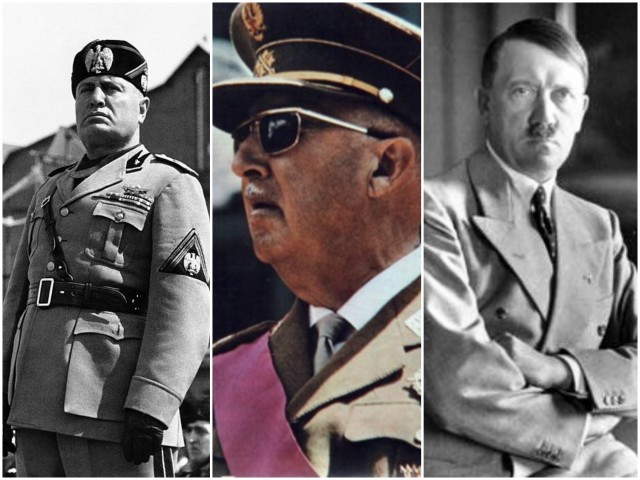
10 – Promoting Fascism
Hitler and Mussolini were not the only fascist dictators on the rise before the onset of WWII. The established dictators of Germany and Italy helped a third fascist take power in Spain—Francisco Franco.
Each of the three dictators had a strong paramilitary political party of die-hard fascists, and helpfully, all of these parties were color-coded. Hitler had his ‘brown shirts’ and Mussolini had his ‘black shirts.’ Only Franco’s Falange chose a more colorful uniform, outfitting themselves in blue.
The fascist Falange began in 1933 under the leadership of José Antonio Primo De Rivera. They were the main fascist component of the coalition that would later back the Nationalist military rebellion against the government of the Spanish Republic.
The Falange, along with monarchists and Catholics, were a backbone of enthusiasm and fervor that greatly aided Generalissimo Franco in his efforts to win the Spanish Civil War.
The fascist zeal of the Falange did not die off at the end of the Spanish Civil War. The civil war ended the same year WWII began, so many of the Falangists openly supported their fascist brethren in Germany and Italy.
In fact, chaotic mobs of Falangists threw rocks at the British embassy in Madrid. The Franco regime also insulted the United States—Franco’s brother-in-law Serrano Suñer applauded the Japanese attack on the U.S. naval base, Pearl Harbor.
Serrano even had Heinrich Himmler tour Spain to advise the Franco regime on Gestapo tactics. Even though Spain officially took a neutral stance during WWII, both sides could clearly see that Franco and his regime favored the Axis powers.
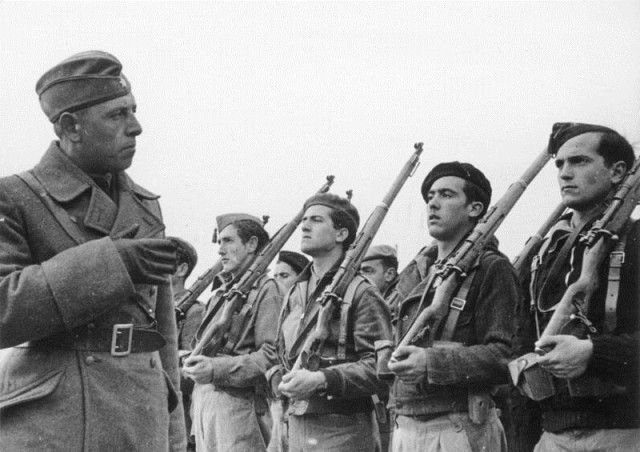
9 – Practicing Warfare With the Axis in the Spanish Civil War
Generalissimo Franco and the Nationalists had been militarily aligned with Germany and Italy before WWII began.
The Spanish Civil War was an early proxy war between many of the nations that would later fight in the Second World War—Germany and Italy were Franco’s greatest friends during the civil war, while France and the Soviet Union were Franco’s greatest enemies.
The Spanish Civil War allowed Germany, Italy and the Soviet Union to test the mettle of their troops, and to explore new battle-tactics.
Franco was heavily dependent on German and Italian aid during the Spanish Civil War. Without German air transportation, Franco would never have been able to move his Moroccan colonial troops past the Spanish Republic’s navy.
At the start of the civil war, Hitler and Mussolini both lent the Spanish Nationalists air power and weaponry. At the height of the civil war, Germany and Italy ramped up their contributions to Franco’s war effort, counteracting the Soviet Union’s support of the Spanish Republic.
Hitler sent Franco his Condor Legion, consisting of approximately 7,000 fighting men and 90 airplanes, while Mussolini sent in an infantry regiment of around 45,000 men, as well as his own air force.
The German and Italian troops participated in many of the battles during the Spanish Civil War.
The most notorious air raid was the bombing of the Basque city of Guernica. Masterminded by Lt. Col. Wolfram von Richthofen of the Condor Legion, a total of 25 bombers and 15 fighters carried out the raid, flown by German and Italian pilots. Franco’s foreign soldiers, however, were not always successful.
The most notable defeat was suffered by the Italians in the Battle of Guadalajara, where Mussolini’s troops failed in their offensive against the defenses of Madrid.
All in all, the aid given to the Nationalists by Germany and Italy was greatly appreciated.

8 – Speeches Praising the Axis Powers
When WWII began, and the Allied and Axis sides began to clash, Generalissimo Franco struggled to keep his bias hidden from the world.
To the Axis powers, Franco spoke of allegiance to the fascist cause. To the Allied powers, he spoke of being a non-belligerent observer, willing to mediate surrender or peace.
The result was frustration on both sides, with the Axis wondering when Spain would join the war and the Allies constantly evaluating the defenses of the vital Strait of Gibraltar.
Even though Franco’s official stance was neutral, his rhetoric was definitely pro-Axis. Concerning Hitler’s methods of rule, Franco stated to a German official named Stohrer, “I identify myself completely with them.”
In another speech before the National Council of the FET (Falange), Franco boldly claimed that “not even the American continent can dream of intervening in Europe without exposing itself to a catastrophe” and argued that the “issues of the war have been falsely presented, and the Allies have lost it.”
The speech (mentioned above) angered both the Axis and the Allied powers. The Allies immediately began planning a strategy to pursue if ever Spain entered the War—it consisted of taking the Canary Islands if Gibraltar was compromised.
The Axis detested the loss of the element of surprise caused by the speech if Franco decided to join the war. Stohrer, the German official in Spain, wrote with remorse, “it suddenly opened the eyes of the English and the Americans about the position of Spain.”
Stohrer was right; if the Allied powers had believed Franco to be truly neutral, then his speech quickly cleared the illusion.
There could be no misunderstanding of Franco’s preferences when he stated in his speech, “the blood of our youth will be united with that of our Axis comrades, as a living expression of solidarity.”
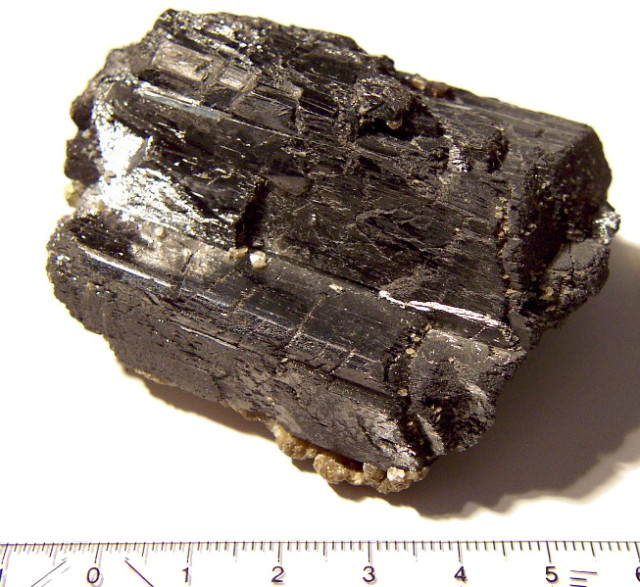
7 – Trade With the Axis Powers
During WWII, the Axis powers struggled to keep a stockpile of the necessary strategic materials required for warfare.
While the gaze of the United States was focused on Pearl Harbor, the Japanese frantically conquered the oil fields of Southeast Asia.
Similarly, Germany marched relentlessly against the oil-rich region of Stalingrad. Franco’s regime in Spain found itself in a very beneficial situation—they could sell supplies to the Axis and the Allied powers would appease Franco, wanting Spain to remain a non-belligerent nation.
So, that is what Franco decided to do, and the ploy worked like a charm.
German officials worked in Spain to ensure that a steady stream of resources flowed into the German war machine.
Spain traded food, iron, alloys and wolfram (tungsten) to Germany. There were also two major German banks operating in Spain.
Analysts believed that Spain housed around $95 million external German assets by the end of WWII, and possibly a grand total of $140 million worth of gold (123 tons). Once the Allied powers were clearly turning the tide of the war, they were able to pressure the Franco regime into ending trade with the Axis.
By the end of January 1944, the United Sates expressed its plan to end its shipments of petroleum to Spain if the regime continued its trade with the Axis powers; as a result, by May of the same year, Spain drastically cut back on its aid to the Axis.
Though Spain officially reinforced its neutrality, supplies were still smuggled into Germany, and German agents remained in Spain.
The gold that Spain had gained from Germany during the war was an issue. U.S. analysts estimated that $100 million of the $140 million worth of gold was the result of Germany looting conquered nations.
In 1948, Spain only returned around $1.3 million worth of gold back to the Allied powers, but the issue was not pressed, for the war was over, and peace, healing, and reconstruction were the prime objective.
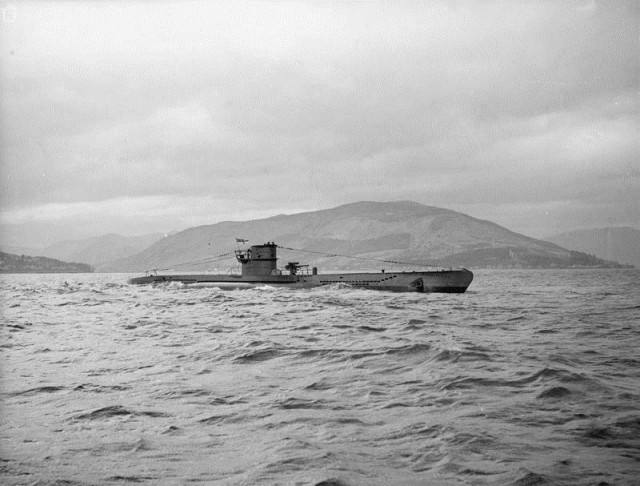
6 – Resupply of Axis Air and Naval Craft
Axis powers did not necessarily need to wait for supplies to be shipped from Spain before they could benefit from Spanish goods and manpower.
The Franco Regime allowed its fascist friends to bypass any middlemen and obtain resources directly from Spain’s sovereign soil.
German and Italian air and naval forces could receive several services at locations scattered around the Spanish coast, colonial lands, and islands.
The Franco regime maintained, refueled and repaired Axis aircraft and submarines that were operating near Spain. German U-boats were allowed to refuel on the Spanish western coast, Morocco and the Canary Islands, greatly extending the range of the deadly submarine wolf packs.
Understandably, the Allies were outraged over Spain’s resupply of German U-boats and immediately demanded that the resupply facilities be closed down.
While the resupply program was active, it is possible that Spain refueled around 20 U-boats.
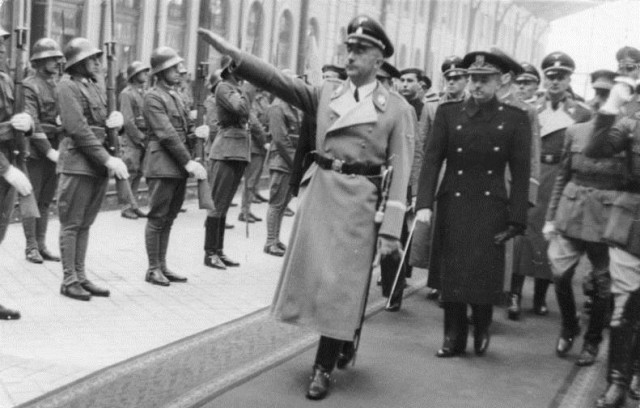
5 – Franco’s Collaboration with Nazism
Franco did not willingly give Jews over to the Nazis to be slaughtered, and he did not install concentration camps in his country, but Spain’s dictator did collaborate with Nazi Leaders in Germany.
Truth be told, Spaniards saved many Jewish lives during WWII, but these heroic moments were rarely done under the instruction of Generalissimo Franco.
A brief display of humanity came from the Franco Regime when it allowed nearly 41,000 refugees to enter Spain during WWII.
Though refugees were allowed into Spain, the Franco regime deeply considered what it would do if it became fully allied to Nazi Germany—the preparations Franco made are astounding.
Around 1941, Franco’s regime tasked its provincial governors to create a comprehensive list of all Jews living in Spain; the list was then handed over to Heinrich Himmler. No tangible alliance ever formed between Franco and the Axis powers, so nothing ever came of the list, but the fact of the list’s existence is chilling.
Spain also provided shelter for active Nazi members after WWII ended. Spain was not alone in sheltering potential war criminals—the USA forgave and harbored Wernher von Braun, the inventor of the German V2 rocket.
Nevertheless, Spain provided new identities and shelter to over 100 Nazis after the end of WWII.
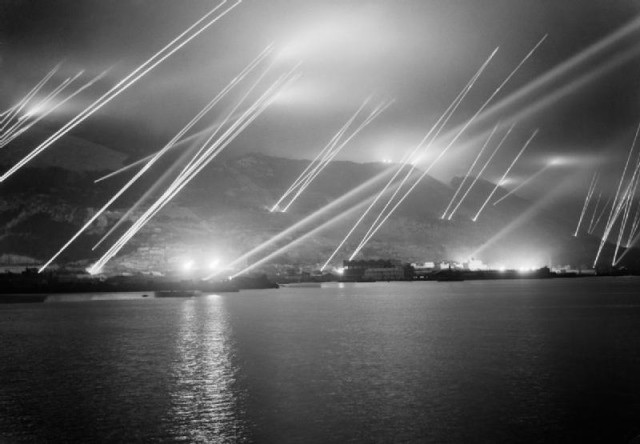
4 – Axis Monitoring Stations
Resupply and maintenance were not all that the Spanish mainland provided to the Axis powers. Franco’s regime worked with Axis intelligence networks, allowing them to spy on Allied ships moving through the straights of Gibraltar.
Many of the Axis aircraft that Spain serviced were reconnaissance airplanes, reporting to German observation posts located by the Spanish coast.
Spain aided the intelligence gathering of all of the members of the Axis (including Japan), but they mainly worked with the German secret service—the Abwehr. The German intelligence had offices in both Morocco and the Spanish mainland, with a major headquarters in Madrid (Link 27).
With their positioning on both sides of the choke-point entrance of the Mediterranean, the Abwehr could keep decent track of Allied naval movements in the Mediterranean. The Allied powers put pressure on the Franco regime to end Spain’s collusion with Axis intelligence.
When the United States halted its shipments of petroleum to Spain in protest of Franco’s trade of war materials to the Axis, Franco was also ordered to end his monitoring and spying; Franco agreed to close down the German embassy in Tangier and to remove German agents from Spain.
Despite this agreement with the Allies in 1944, Spain continued to supply intelligence to the Axis and smuggled at least 800 tons of war materials to Germany.

3 – German Saboteurs in Spain
As the monitoring stations gathered information in Spain, Germany needed to use the intelligence to benefit their war effort. Naturally, the Abwehr turned to sabotage to disrupt Allied ambitions in the region.
Franco’s aid to the German saboteurs resulted in the sinking of multiple Allied ships, and many of the Abwehr agents who carried out the missions were recruited from Spain. Fortunately, Britain had in place a top-notch intelligence crew of their own stationed around Gibraltar.
Though Abwehr sabotage attempts were largely successful around Spain in the first few years of the war, Britain was quickly able to halt all further attempts by 1943, with a total of 43 sabotage plots foiled by British counter-intelligence (https://www.mi5.gov.uk/the-battle-for-gibraltar).
The British were able to take down the German saboteurs by implementing the “Double Cross” technique to turn Spaniards who were recruited into the Abwehr into double agents.
Two of the most lauded double agents used by the British to disrupt German sabotage attempts were Agent NAG, and the Queen of Hearts—NAG was an Abwehr agent who continuously handed over materials to the British, and the Queen of Hearts was the wife of a well-informed Spanish naval officer (https://www.mi5.gov.uk/the-battle-for-gibraltar).
Using competent double agents such as NAG and the Queen of Hearts, British counter-intelligence was able to completely shut down German sabotage around the Straits of Gibraltar.
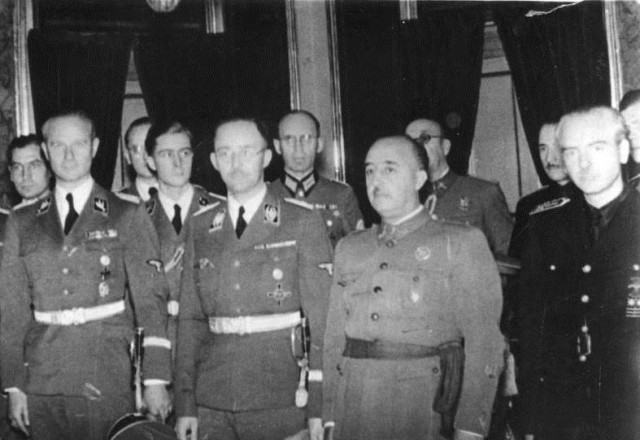
2 – Secret Alliance with Axis
Franco aligned with the Axis ideologically, and he aided them with a supply of war materials, intelligence and saboteurs, but he was not actually allied with the Axis—or was he?
In fact, Franco signed Spain into a secret alliance with Germany and Italy in 1940. The secret alliance is known as the Hendaye Meeting or the Hendaye Agreement. In a 6-point agreement, Germany, Italy and Spain expressed their mutual bond, and Franco decreed that Spain would eventually enter WWII.
The secret alliance, however, was worded loosely, with Franco demanding military support and the right to French colonial land in North Africa before Spain joined the war.
The most direct portion of the Hendaye meeting reads as follows:
“In fulfillment of its obligations as an ally, Spain will intervene in the present war of the Axis Powers against England after they have provided it with military support necessary for its preparedness, at a time to be set by the common agreement of the three powers, taking into account military preparations to be decided upon. Germany will grant economic aid to Spain by supplying it with food and raw materials, so as to meet the needs of the Spanish.”
Franco never fulfilled the Hendaye Agreement. He was able to back-peddle his way out of the agreement again and again, referring to the precise wording of the text—Spain needed to be prepared, and the Spanish people needed adequate provisions.
The existence of this secret alliance, however, remains chilling, especially considering Franco’s regime was already guilty of spying, trading and colluding with the Axis powers during the war.
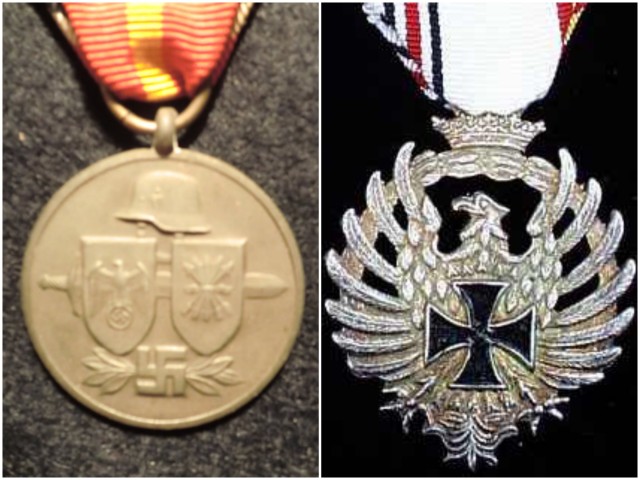
1 – The Blue Division
Just because the secret alliance between Franco and the Axis never officially pulled Spain into the war, that does not mean that the Franco Regime never supplied military might to the war. In fact, one of the most decorated divisions of the Axis was from Spain—the Blue Division.
Germany’s 250th Infantry Division, otherwise known as the Blue Division, was an army of Spanish volunteers—conscripted men were added to the division later—who joined the Axis and engaged in 21 major battles.
The Blue Division wore the standard German gray into battle but augmented their uniforms with a shield bearing the colors of Spain on their right sleeves.
In early 1941, the original Blue Division left from Spain with 18,000 volunteers. It would expand to around 50,000 men; of those, around 16,000 of them were wounded or captured, and approximately 4,500 died in combat.
In addition to the Blue Division, there was also a group of Spanish airmen, known predictably as the Blue Squadron, who were given credit for shooting down 156 Soviet aircraft.
The Blue Division fought its first battle on the 10th of October 1941, near Leningrad; the Spaniards marched nearly 625 miles in 45 days, with around 70 pounds of gear on their backs to reach the front.
The Blue Division continued fighting along the Eastern Front until Allied pressure began to wear on Generalissimo Franco.
In 1943, the Blue Division was reduced to the Blue Legion, a force of approximately 3,000 men—The Blue Legion too, was withdrawn by March 1944. Some of the Spanish volunteers, however, were too devoted to the fascist cause to return to Spain.
The Waffen SS absorbed many Spanish volunteers into their ranks, but other Spanish fighters were distributed into other military entities such as the 3rd Mountain Division and the 357th Infantry Division; Spaniards were also present in the 11th SS Division Nordland, which defended besieged Berlin at the end of the war.
Members of the Blue Division received several awards and medals for shedding their blood on the Eastern Front.
In January of 1944, they received the Blue Division Medal, otherwise known as the “Commemorative Medal for Spanish Volunteers in the Struggle against Bolshevism.”
The Franco Regime issued its own Spanish Volunteer Medal for the Blue Division, which displayed a bold Iron Cross in the front center. After WWII ended, Franco made no restrictions on displaying any of the Blue Division medals, not even the medal commissioned by Germany, which displayed a swastika.
The military aid of the Blue Division, mixed with Spain’s supply to Germany of war materials, intelligence and sabotage, made Spain a full-fledged ally of the Axis powers in everything but formality.
Fortunately, Generalissimo Franco felt his country was in too much disrepair after the Spanish Civil War to join another harrowing crusade.
Spectacularly, Franco was able to safely balance all sides and survive WWII with his regime intact.
All images courtesy of the Creative Commons and Flickr
Written by C. Keith Hansley.
Read all of his articles at (http://historianhut.blogspot.com/), where you can also find free pictures, recommended books and keen quotes.
Link 1: http://www.britannica.com/topic/Falange
Link 2: http://warfarehistorynetwork.com/daily/wwii/the-spanish-blue-division-along-the-eastern-front/
Link 3: http://www.florentinorodao.com/academico/aca97e.htm
Link 4: https://books.google.com/books?id=Prd-AgAAQBAJ&lpg=PR2&dq=Richard%20Wigg&pg=PA14#v=onepage&q&f=false
Link 5: https://books.google.com/books?id=rn6aBAAAQBAJ&lpg=PP1&dq=Franco%20Payne%20Palacios&pg=PA129#v=onepage&q&f=false
Link 6: https://books.google.com/books?id=rn6aBAAAQBAJ&lpg=PP1&dq=Franco%20Payne%20Palacios&pg=PA130#v=onepage&q&f=false
Link 7: https://books.google.com/books?id=rn6aBAAAQBAJ&lpg=PP1&dq=Franco%20Payne%20Palacios&pg=PA178#v=onepage&q&f=false
Link 8: https://books.google.com/books?id=rn6aBAAAQBAJ&lpg=PP1&dq=Franco%20Payne%20Palacios&pg=PA181#v=onepage&q&f=false
Link 9: http://spanish-civil-war.org/guadalajara.shtml
Link 10: https://books.google.com/books?id=rn6aBAAAQBAJ&lpg=PP1&dq=Franco%20Payne%20Palacios&pg=PA248#v=onepage&q&f=false
Link 11: https://books.google.com/books?id=rn6aBAAAQBAJ&lpg=PP1&dq=Franco%20Payne%20Palacios&pg=PA256#v=onepage&q&f=false
Link 12: https://books.google.com/books?id=rn6aBAAAQBAJ&lpg=PP1&dq=Franco%20Payne%20Palacios&pg=PA257#v=onepage&q&f=false
Link 13: https://books.google.com/books?id=rn6aBAAAQBAJ&lpg=PP1&dq=Franco%20Payne%20Palacios&pg=PA256#v=onepage&q&f=false
Link 14: https://books.google.com/books?id=rn6aBAAAQBAJ&lpg=PP1&dq=Franco%20Payne%20Palacios&pg=PA256#v=onepage&q&f=false
Link 15: http://www.archives.gov/research/holocaust/finding-aid/civilian/rg-84-spain.html
Link 16: http://www.archives.gov/research/holocaust/finding-aid/civilian/rg-84-spain.html
Link 17: https://books.google.com/books?id=rn6aBAAAQBAJ&lpg=PA256&dq=Franco%20Payne%20Palacios&pg=PA278#v=onepage&q&f=false
Link 18: http://www.archives.gov/research/holocaust/finding-aid/civilian/rg-84-spain.html
Link 19: http://www.archives.gov/research/holocaust/finding-aid/civilian/rg-84-spain.html
Link 20: https://www.questia.com/magazine/1G1-19581005/franco-s-nazi-haven
Link 21: https://books.google.com/books?id=rn6aBAAAQBAJ&lpg=PA278&dq=Franco%20Payne%20Palacios&pg=PA229#v=onepage&q&f=false
Link 22: http://www.archives.gov/research/holocaust/finding-aid/civilian/rg-84-spain.html
Link 23: http://www.haaretz.com/wwii-document-reveals-general-franco-handed-nazis-list-of-spanish-jews-1.297546
Link 24: https://www.questia.com/magazine/1G1-19581005/franco-s-nazi-haven
Link 25: https://www.questia.com/magazine/1G1-19581005/franco-s-nazi-haven
Link 26: https://books.google.com/books?id=7ufGAAAAQBAJ&lpg=PA130&dq=serrano%20su%25C3%25B1er%20Pearl%20Harbor&pg=PA130#v=onepage&q&f=false
Link 27: https://www.mi5.gov.uk/the-battle-for-gibraltar (usually needs to be pasted)
Link 28: http://www.archives.gov/research/holocaust/finding-aid/civilian/rg-84-spain.html
Link 29: http://www.archives.gov/research/holocaust/finding-aid/civilian/rg-84-spain.html
Link 30: https://books.google.com/books?id=rn6aBAAAQBAJ&lpg=PA278&dq=Franco%20Payne%20Palacios&pg=PA250#v=onepage&q&f=false
Link 31: https://www.mi5.gov.uk/the-battle-for-gibraltar (usually needs to be pasted)
Link 32: https://www.mi5.gov.uk/the-battle-for-gibraltar (usually needs to be pasted)
Link 33: https://books.google.com/books?id=rn6aBAAAQBAJ&lpg=PA278&dq=Franco%20Payne%20Palacios&pg=PA243#v=onepage&q&f=false
Link 34: http://warfarehistorynetwork.com/daily/wwii/the-spanish-blue-division-along-the-eastern-front/
Link 35: http://www.wehrmacht-awards.com/axis_allies/blue_division.htm
Link 36: http://www.wehrmacht-awards.com/axis_allies/blue_division.htm
Link 37: https://books.google.com/books?id=rn6aBAAAQBAJ&lpg=PA278&dq=Franco%20Payne%20Palacios&pg=PA255#v=onepage&q&f=false
Link 38: http://www.wehrmacht-awards.com/axis_allies/blue_division.htm
Link 39: http://warfarehistorynetwork.com/daily/wwii/the-spanish-blue-division-along-the-eastern-front/
Link 40: http://www.wehrmacht-awards.com/axis_allies/blue_division.htm
Link 41: http://www.wehrmacht-awards.com/axis_allies/blue_division.htm
Link 42: http://www.wehrmacht-awards.com/axis_allies/blue_division.htm
Link 43: http://www.wehrmacht-awards.com/axis_allies/blue_division.htm
